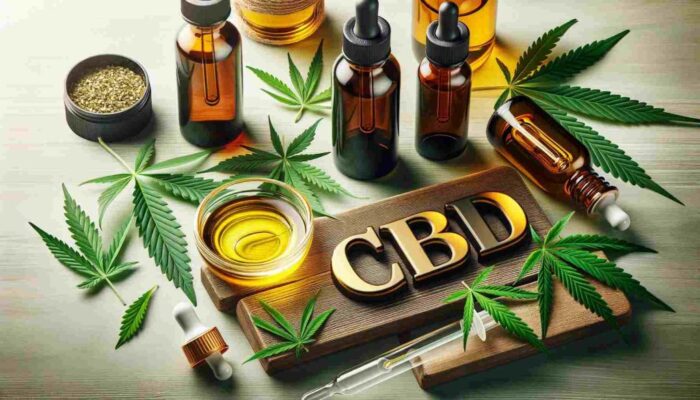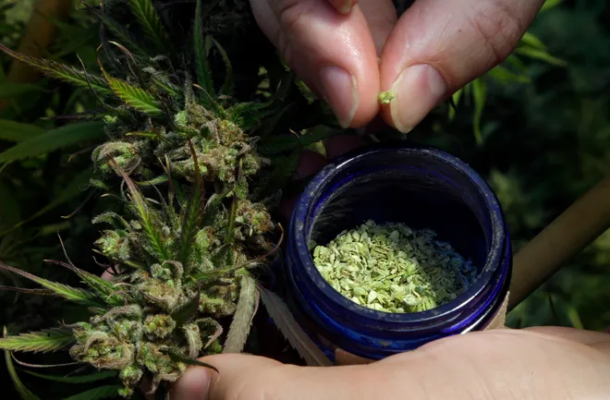Cannabis (also known as marijuana) is a plant of the genus CannabisIt is often used for medicinal and recreational purposes. Cannabis contains numerous chemical compounds called cannabinoids, the two main ones being THC (tetrahydrocannabinol) and CBD (cannabidiol). Here is some detailed information on cannabis and its constituents.
Main components of cannabis
THC (Tetrahydrocannabinol)
Effects: THC is the most powerful psychoactive compound in cannabis. It is responsible for most of the psychological effects experienced by users, such as euphoria, altered sensory perceptions and mood swings.
Mechanism of action: THC acts by binding to the receptors cannabinoids in the brain and central nervous system, mainly CB1 receptors.
How to use it: THC is often used medicinally to relieve pain, reduce nausea and stimulate appetite, particularly in cancer and HIV/AIDS patients.

CBD (Cannabidiol):
Effects: CBD does not have psychoactive effects like THC. Instead, it has soothing effects and can be anti-inflammatory, analgesic, antipsychotic and anticonvulsant.
Mechanism of action: CBD does not bind strongly to cannabinoid receptors like THC, but interacts with other receptors in the body, such as serotonin receptors.
How to use it: CBD is used to treat a range of health conditions including epilepsy (such as Dravet syndrome), anxiety, sleep disorders and chronic pain.
Other components of cannabis
As well as THC and CBD, cannabis contains over 100 other cannabinoids, each with its own characteristics and effects. Some of these include:
CBG
CBG (Cannabigerol): Considered to have antibacterial potential and may help reduce inflammation.
CBC
CBC (Cannabichromene): Has anti-inflammatory effects and can enhance the effects of THC and CBD.
CBN
CBN (Cannabinol): Formed by the breakdown of THC, it has sedative effects and can help treat insomnia.
Medical applications of cannabis
Medical cannabis is used to treat a range of conditions, from chronic illnesses such as pain and inflammation to neurological disorders such as epilepsy and Alzheimer's disease. Parkinson. Products based on cannabis can be consumed in a variety of forms, including smoke, vapour, oils, tinctures and food.
Side effects and risks
Although cannabis has many medical applications, it can also have side effects and risks, including:
- Psychological and behavioural disorders (such as anxiety and panic attacks).
- Impact on ability to drive and perform tasks requiring concentration.
- Addiction and substance abuse problems.
Attention
Cannabis is a plant with great medical potential, but it also carries risks that require careful management. The research and use of cannabis must be carried out under the supervision of health professionals to ensure safety and efficacy.

The best ways to use cannabis
The use of cannabis may depend on the objective (medical or recreational) and personal factors such as the user's state of health, experience and preferences. Here are some of the most common and effective ways of using cannabis:
Smoking cannabis
Smoking a joint
Instructions for use: The cannabis is rolled in paper and smoked like a cigarette.
The benefits: Easy to prepare, fast-acting.
Disadvantages: Harmful to the lungs through smoke inhalation.
Using a pipe or bong
Instructions for use: The cannabis is placed in the combustion chamber and burnt, then inhaled through the pipe or bong.
The benefits: Reduces the amount of smoke inhaled compared with a joint.
Disadvantages: Always harmful to the lungs, requires special equipment.
Use a spray bottle
Instructions for use: The cannabis is heated to a temperature below the point of combustion, releasing the compounds without producing smoke.
The benefits: Reduces lung damage, purer taste.
Disadvantages: High initial cost to buy a vaporiser.
Using cannabis oil and tinctures
Cannabis oil
Instructions for use: Administered directly under the tongue (sublingual) or added to food or drink.
The benefits: Easy to control dose, not harmful to the lungs.
Disadvantages: Effect slower than smoking, high cost.
Dyes
Instructions for use: Used under the tongue or diluted in water.
The benefits: Fast absorption, easy-to-control dosage.
Disadvantages: May irritate the mouth in some people.
Consumption by mouth (edibles)
Instructions for use: Cannabis is incorporated into foods and drinks such as cakes, sweets and teas.
The benefits: Not harmful to the lungs, long-lasting effects.
Disadvantages: Slow onset of action (30 minutes to 2 hours), dosage difficult to control, risk of overdose.
Topical use
Instructions for use: Products such as creams and massage oils containing cannabis are applied directly to the skin.
The benefits: Locally effective, with no psychoactive effects.
Disadvantages: Effect limited to the area of application, ineffective for systemic medical problems.
Capsules and tablets
Instructions for use: Cannabis is processed into capsules or tablets.
The benefits: Easy to use, precise dosage.
Disadvantages: Slow-acting (similar to edibles), potentially high cost.
>> Read our article: What is cannabis?
Use in the form of hashish or concentrates
Hashish
Instructions for use: Can be smoked, vaporised or added to food.
The benefits: Powerful, fast-acting.
Disadvantages: Dosage difficult to control, requires experience.
Concentrates
Instructions for use: Used in a spray bottle or added to food.
The benefits: Powerful, fast-acting.
Disadvantages: Dosage difficult to control, risk of overdose.
Conclusion
The method for using cannabis depends on many factors, such as your objective, state of health and personal preferences. It is essential to start with low doses and increase gradually to control the effects and avoid overdosing. Consulting a health professional before using cannabis is also important, especially for medical purposes.

